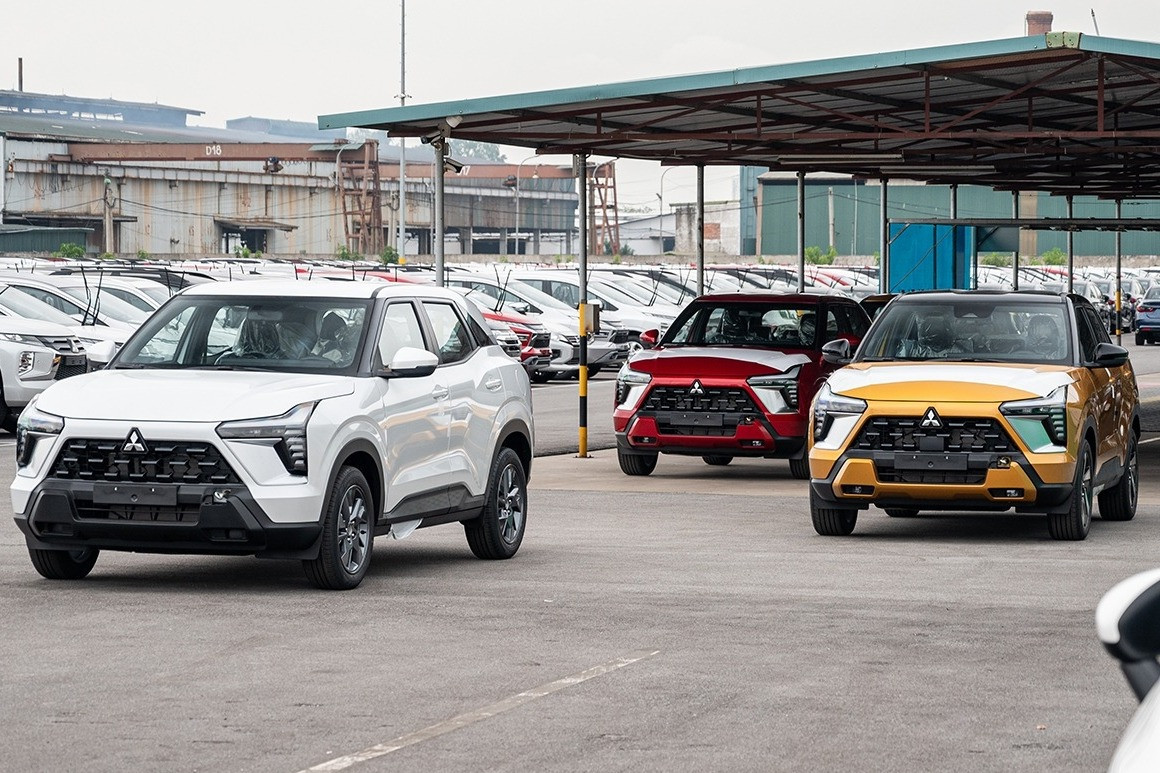Despite unprecedented price cuts across the domestic auto market, Vietnamese consumers continue to show a strong preference for imported vehicles. This rising trend reflects a growing “foreign car bias” among local buyers, even as locally assembled models struggle to gain ground.
Sharp rise in imported vehicles

According to the latest report from the General Department of Customs, Vietnam imported 19,042 completely built-up (CBU) vehicles in May 2025, a slight 1.8% increase from April but a substantial 59.1% rise compared to May 2024.
In the first five months of 2025, Vietnam imported a total of 84,045 CBU vehicles - an impressive 43.3% increase year-over-year, translating to 25,385 more vehicles.
Notably, passenger cars (with up to nine seats) accounted for 64,336 units or 76% of the total imported volume, rising 35.8% year-over-year (16,967 additional units).
Indonesia, Thailand, and China dominated Vietnam’s auto import market, accounting for 94.7% of total imported vehicles. Indonesia led with 32,613 units (38.8%), followed by Thailand with 28,826 units (34.2%), and China with 18,156 units (21.6%).
Sales reports from the Vietnam Automobile Manufacturers Association (VAMA) also support this trend. In the past three months, CBU vehicle sales among VAMA members consistently outperformed those of domestically assembled vehicles (CKD).
From January to May, imported car sales totaled 68,280 units, surpassing the 62,764 units sold by local assemblers.
Additionally, more than half of the top ten best-selling internal combustion engine models in the first five months of 2025 were imports. These include Indonesia-sourced models like the Mitsubishi Xpander, Mitsubishi Xforce, Toyota Yaris Cross, and Toyota Veloz Cross, and Thai imports such as the Ford Ranger, Ford Everest, Toyota Corolla Cross, and Honda HR-V.
Despite higher taxes and longer shipping times, imported cars - especially from Thailand, Indonesia, and China - are increasingly preferred by Vietnamese consumers. This shift raises questions about the effectiveness and future of Vietnam’s domestic auto industry, which has long been seen as a pillar of industrialization.
Why do Vietnamese consumers prefer imported cars?
Experts point to several factors: brand reputation, consistent assembly quality, modern designs, and advanced safety technologies. Thanks to regional trade agreements, many imports from ASEAN countries are also competitively priced.
Meanwhile, domestic models often lag in innovation, offer fewer configurations, and struggle to compete on value. Local manufacturers also face significant challenges in increasing localization rates.
Despite government incentives like reduced registration fees and lower component tariffs, Vietnam’s auto industry still lacks a strong supporting ecosystem. Most domestically assembled vehicles rely heavily on imported components and only perform basic assembly operations like welding and painting.
Foreign automakers tend to treat Vietnam more as a consumption market rather than a manufacturing hub. As a result, even local assembly struggles to match the cost-efficiency of full imports from nations with mature auto industries.
This gap is reflected in sales figures. However, experts note some positive signals despite market difficulties.
According to a recent report from the General Statistics Office, domestic production remains strong, averaging nearly 40,000 vehicles per month in early 2025 - twice the import volume. From January to May, domestic manufacturers produced approximately 183,400 vehicles, up 70.3% year-over-year, with a significant boost from VinFast.
VinFast alone sold 56,187 vehicles in this period - 42.5% of total industry sales - far ahead of rivals like Toyota (23,061), Hyundai (20,007), Ford (17,533), and Mitsubishi (12,130). Its models such as the VF 5, VF 3, and VF 6 frequently topped monthly sales charts.
The company has ambitious plans: producing 1 million EVs by 2030 and achieving an 80% localization rate by 2026.
Auto industry outlook: optimistic goals for 2030 and beyond
A draft strategy by the Institute of Industry and Trade Strategy and Policy under the Ministry of Industry and Trade outlines a bright future for Vietnam’s auto sector.
From 2025 to 2030, domestic car consumption is projected to grow 14–16% annually, reaching 1–1.1 million vehicles by 2030 - double the record highs of 508,547 vehicles in 2022 and 494,300 in 2024.
Passenger cars will account for 63–65% of sales, vehicles with over ten seats for 6–8%, trucks for 26–28%, and special-use vehicles for 4–6%. Eco-friendly vehicles, including EVs, hybrids, solar-powered, and biofuel models, will represent 18–20% of the market.
Annual production of domestically assembled vehicles is expected to grow by 18–20%, reaching 600,000–700,000 units by 2030 and meeting 70% of domestic demand.
Hoang Hiep